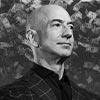Trump Plans $100,000 H-1B Visa Fee, Indian IT Firms on Edge

News Synopsis
Since taking office in January, U.S. President Donald Trump has tightened immigration policies, targeting both illegal and certain legal categories. His latest move on the H-1B program represents one of the most high-profile attempts to reshape temporary employment visas.
U.S. Commerce Secretary Howard Lutnick defended the decision, saying:
“If you’re going to train somebody, you’re going to train one of the recent graduates from one of the great universities across our land. Train Americans. Stop bringing in people to take our jobs.”
The $100,000 H-1B Visa Fee – A Potential Game Changer
U.S. President Donald Trump’s administration announced that companies may soon have to pay $100,000 per year for each H-1B visa worker, multiplying costs for firms that depend on global talent. Lutnick clarified that the fee would apply for each of the visa’s three years, though he noted details were “still being considered.”
Impact on the Technology Sector
The tech industry, which heavily relies on skilled workers from India and China, could be one of the hardest hit. Critics argue that the policy would:
-
Add millions in costs for companies, especially startups and mid-sized firms.
-
Discourage foreign talent from moving to the U.S.
-
Potentially push high-value jobs offshore, weakening America’s competitiveness.
Supporters vs Critics of the H-1B Program
Critics’ Perspective
Many U.S. workers claim the program allows companies to suppress wages and limit opportunities for Americans. Trump has also echoed these concerns in multiple statements.
Supporters’ View
Business leaders like Tesla CEO Elon Musk defend the program, saying it brings in the best global talent. Musk, who himself once held an H-1B visa, has warned that losing access to such talent could harm U.S. innovation and growth.
Deedy Das, a partner at Menlo Ventures, said on X:
“Adding new fees creates disincentive to attract the world’s smartest talent to the U.S. If the U.S. ceases to attract the best talent, it drastically reduces its ability to innovate and grow the economy.”
Data: Who Holds the Most H-1B Visas?
-
India leads globally: 71% of H-1B visas went to Indian workers in 2024.
-
China follows: 11.7% of approvals.
-
Major beneficiaries: Amazon and AWS (12,000+ approvals in H1 2025), Microsoft, and Meta (5,000+ each).
The announcement already triggered a market reaction:
-
Cognizant shares fell nearly 5%.
-
Infosys and Wipro’s U.S.-listed shares dropped between 2–5%.
Regulatory and Legal Concerns
Immigration experts are questioning whether the administration has the authority to impose such high fees. Aaron Reichlin-Melnick, policy director at the American Immigration Council, argued:
“Congress has only authorized the government to set fees to recover the cost of adjudicating an application.”
Currently, entering the H-1B visa lottery involves only a small fee, with additional costs running into a few thousand dollars. The proposed $100,000 fee marks an unprecedented escalation.
Wider Implications: Innovation and Global Talent Flow
Analysts warn that while Washington may gain revenue in the short term, the long-term risks include:
-
Talent drain: Global workers choosing Canada, the UK, or Europe instead.
-
AI race setback: High-value projects could shift overseas, giving China a stronger edge.
-
Reduced competitiveness: Startups and mid-sized firms may find it impossible to hire top-tier engineers.
Jeremy Goldman, analyst at eMarketer, noted:
“In the short term, Washington may collect a windfall; in the long term, the U.S. risks taxing away its innovation edge, trading dynamism for short-sighted protectionism.”
New “Gold Card” Program
Alongside the fee hike, Trump signed an executive order to introduce a “gold card” offering U.S. permanent residency to individuals who can afford to pay $1 million. This aims to attract wealthy individuals but further divides critics who argue the U.S. is prioritizing wealth over merit-based immigration.
Conclusion
The Trump administration’s proposal to impose a $100,000 yearly fee for H-1B visas could reshape the U.S. technology and immigration landscape. While it might align with protectionist policies aimed at boosting American jobs, it risks discouraging global talent and innovation.
With India accounting for over 70% of H-1B visas, the move could hit Indian IT firms and professionals the hardest.
As debates over its legality and long-term economic impact intensify, the tech sector remains on edge—caught between political agendas and the global race for innovation.
You May Like









